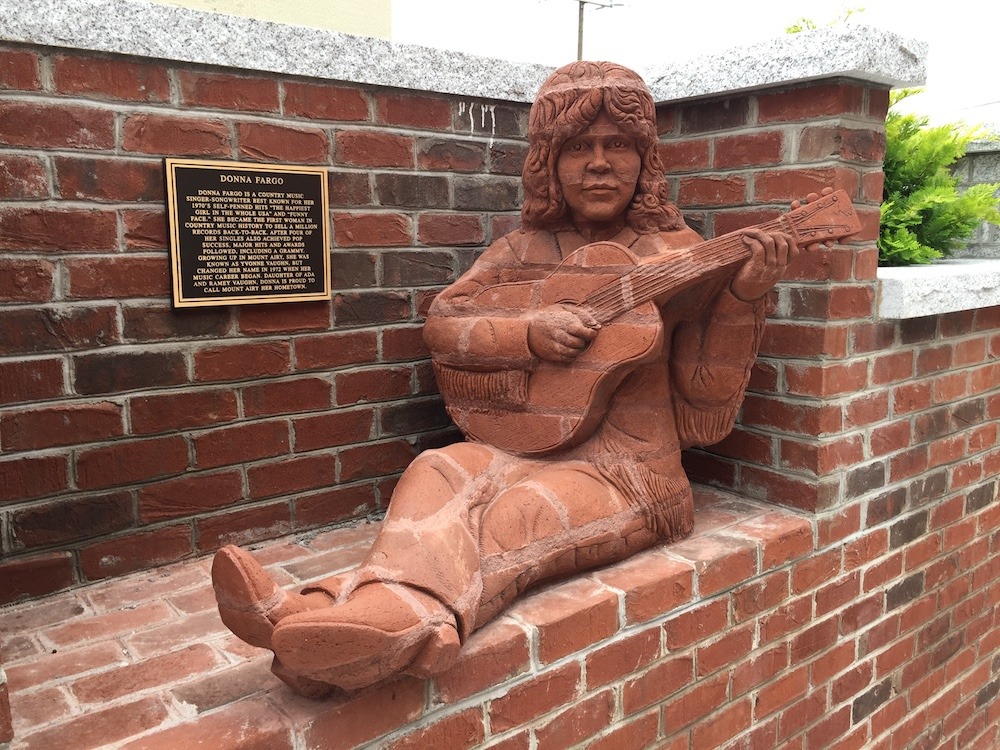Words: Vanessa Salvia
Photos: Brad Spencer
Editor’s Note: Masonry is not only classic and beautiful, but it can also be used to create intricate sculptures and works of art. This month we wanted to share with you the amazing work of innovative sculptor Brad Spencer. Since masonry is timeless and can be used in creative ways, we thought sharing this piece with our MASONRY family was just as important as sharing with the readers of MASONRY DESIGN.
Before Brad Spencer picked up a carving tool, he planned to be a painter. Being an artist of some sort was never really in question, but the Reidsville, North Carolina-based public artist didn’t realize the power of sculpture until he was in art school in Greensboro, North Carolina, and was exposed to different mediums. Not only was he talented- 3D art satisfied him in a way that creating pictures with a paintbrush couldn’t.
“I took a couple of sculpture classes and was really drawn to it,” he says. “I realized I enjoyed the hands-on, physical aspect of it more than painting and it just kind of fit my personality more.”
Although Spencer completed his painting degree, he returned to school for a masters in sculpture, graduating in 1983. He cemented his career as a sculptor by teaching for a year at the same school, and developed his techniques by casting small bronze pieces for gallery shows, some commercial jobs, and occasionally creating commission pieces for the furniture industry.
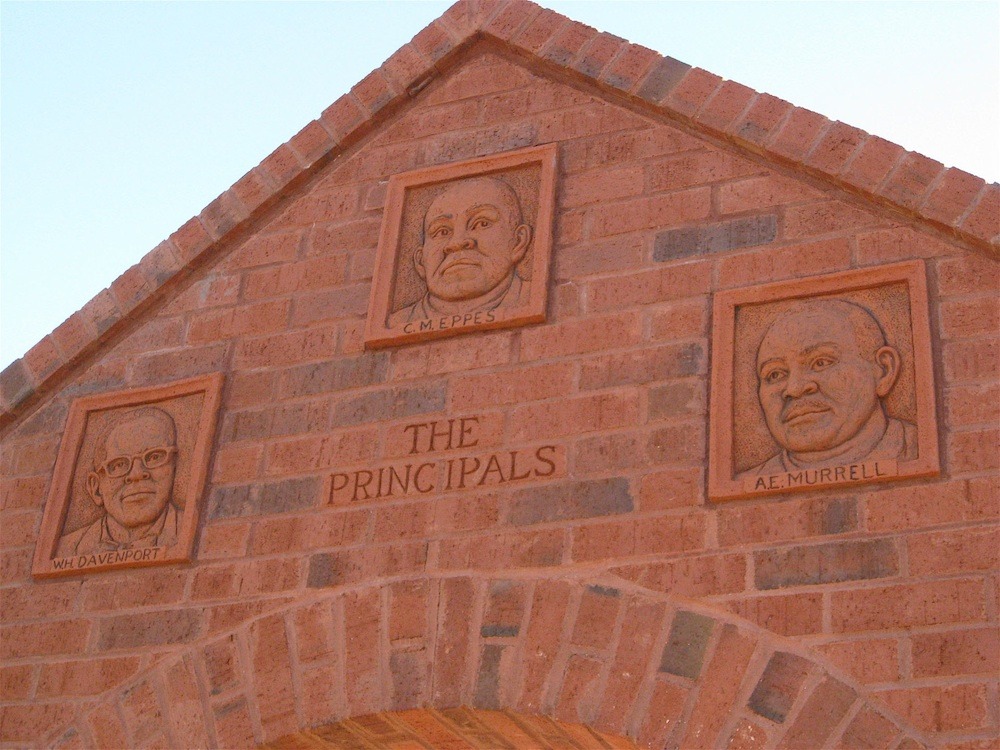
Although he had firmly embraced sculpture, he did not discover brick sculpture until 1989 when a friend, who happened to be a brick salesman, showed him a brochure of sculpture work that was being done with brick as the medium. He was interested enough that he and the company, Boren Brick in Pleasant Garden, North Carolina (a geographic area rich in clay and brick-making history) partnered up. They wanted to offer brick sculpture as a product, and set up a studio for Spencer at the brick plant. He received commissions from the sales staff and began working with brick more often than any other medium. After two years, he set up his own brick sculpture studio.
His early brickwork included signage and some projects that were built into buildings (not free-standing), which often told historical stories. “Because my background has been more in three-dimensional work, I was interested in exploring the idea of making the sculptures freestanding, so that they wouldn’t have the stipulation that they needed to be part of the architecture,” Spencer explains. “Since I had already done so much casting, working with brick was an easy transition.”
While Spencer’s work might appear to be created from carved individual bricks, he actually gets larger pieces made to his specs by a brick company. The “blanks,” as you might call them, are unfired brick with a face that looks like an 8-inch brick and gives the illusion that it’s a single brick, but the depth can be up to 12 inches.
“They put these special shapes on pallets for me, and wrap those in plastic and then they’re shipped to my studio in Reidsville and unloaded,” Spencer says.
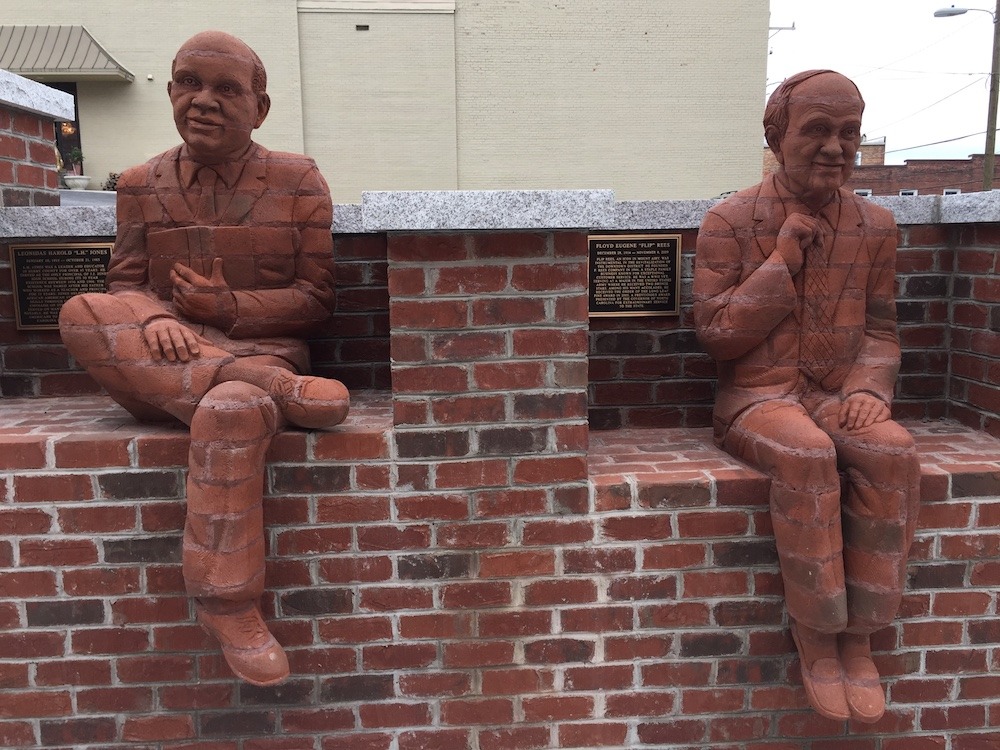
To create the sculptures, Spencer stacks the custom-made pieces with clay spacers that are just under a half-inch, essentially the same dimensions as a mortar joint, which he adds so that there’s room for mortar. He adheres to basic masonry procedures as he’s laying it up, he says, although he uses a small clay model to help him scale the piece.
One model of a piece he’s currently working on is 1/6th the size of the final piece. As he carves the unfired brick, he numbers each piece with a course number and a number in the course. He documents his progress along the way with photos, then takes it apart and sends it back to the brick company to be fired.
“Once that’s done, it goes to the jobsite and from then on it’s pretty much regular masonry,” Spencer remarks. “On the big projects I hire masons to come in and do a little bit of the heavy lifting. On the small projects I do my own installations, but I’m always there either way to supervise work that needs to be done.”
Once completed, his projects look and feel just like brick. Sometimes, the pieces need internal supports such as stainless steel rods, but most of the time all that is needed for a completed installation are basic masonry techniques. The final appearance is a matter of artistic choice—he may use a mortar colored to a similar color as the brick, which gives the final piece a more uniform, monolithic look, while at other times he may want the mortar joints to be a starkly different color. The pieces are finished with a breathable sealer to minimize water penetration.
His pieces take months, and require some engineering. Not only does he have to account for perspective, meaning how close the audience will be to view the piece, but he also has to account for shrinkage in the brick when it’s fired.
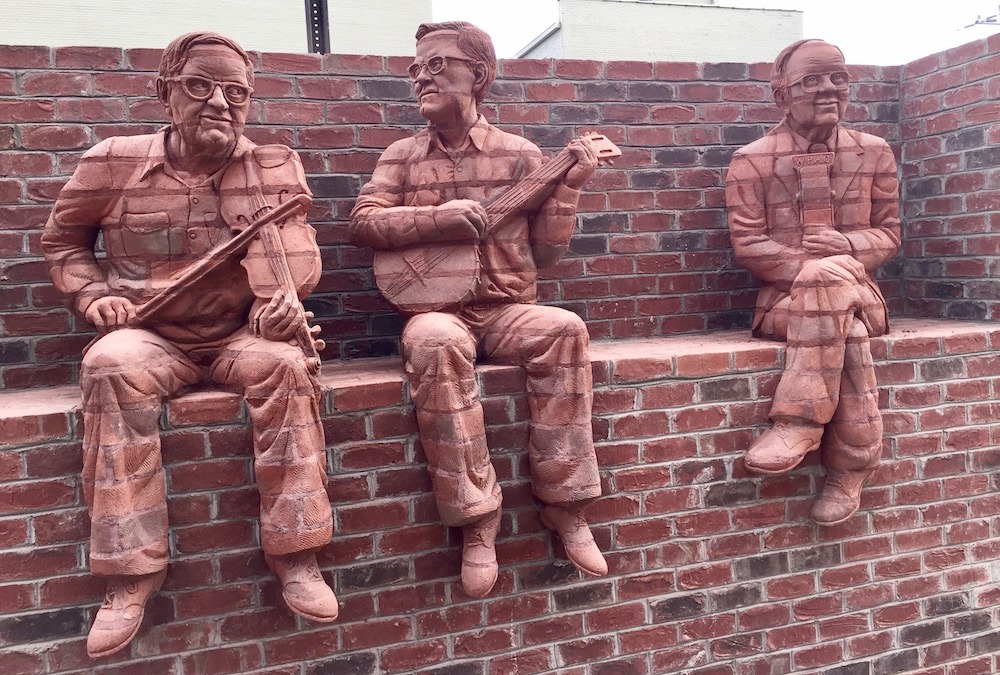
“For instance, if I’m making a single figure and it’s not oversized, you get them outside and they look too small, so generally the pieces are probably about 15% oversized than the actual person is, maybe 20% depending on how close people can get to it,” he says.
A single seated figure might take three weeks, whereas some projects take months. The C. M. Eppes High School Memorial in Greenville, North Carolina, commemorates Charles Montgomery Eppes, a teacher and administrator for more than 40 years at the community’s African-American high school, which burned down in 1973.
The brick arch with a pointed “schoolhouse” top sits where the front door of the school once stood, and includes a brick from the original foundation. One 130 foot-long retaining wall presents high relief sculptures of student life, and recreates the small front steps where students gathered to socialize before and after school.
“This school’s alumni association is still really strong, and it was important to them to indicate the history of the site when the redevelopment of the area was going on,” Spencer says. “We found pretty much where the entryway was, so I tried to recreate the architecture stylistically of what the doorway was like, and then I put two students on either side that are reading.”
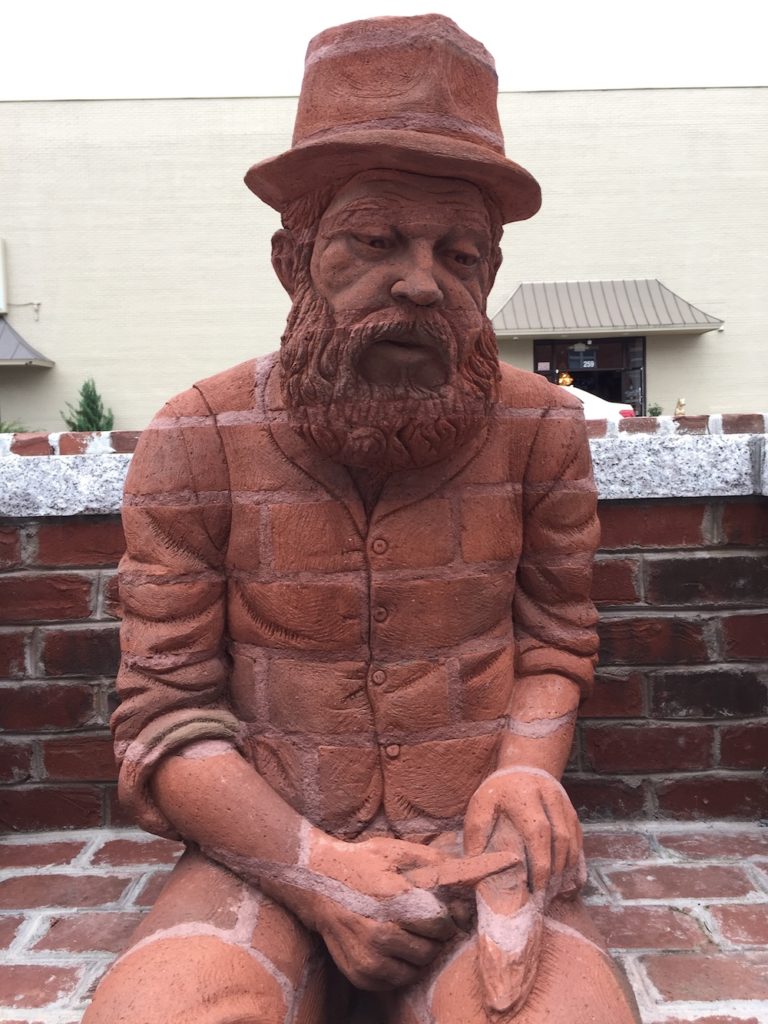
The long wall took about three months, with the project as a whole taking about six months from beginning to end, including a stretch of weather that changed from very warm to so cold he couldn’t work.
Another well-received project, called “The Common Thread,” is located in a public plaza in downtown Gastonia, North Carolina. This series of sculptures was originally planned to be a fountain, but Spencer was able to complete a design that encompassed the whole plaza.
In this case, when the city was undertaking a downtown streetscape redevelopment, they put out a call for artists. “Originally, they were interested in a single sculpture in a fountain that they were going to build,” says Spencer. “Putting brick in a place that’s constantly exposed to water is not the best idea. I thought, with this budget I can do some other things here, so I’m just going to propose something completely different than they’re asking for.”
Gastonia grew up around the cotton mills in the area, so one of the features represents a mill theme- including some children that worked in the mills, and the realities of what it was like to be a mill worker at that time. Seats that resemble stools along the perimeter recall the pottery of the Catawba Native Americans, the earliest known inhabitants of the area. The fountain wall displays indigenous plants and animals and the Crowders Mountain, which borders Gastonia. The third part takes the viewer into the future, with a man holding up a child.
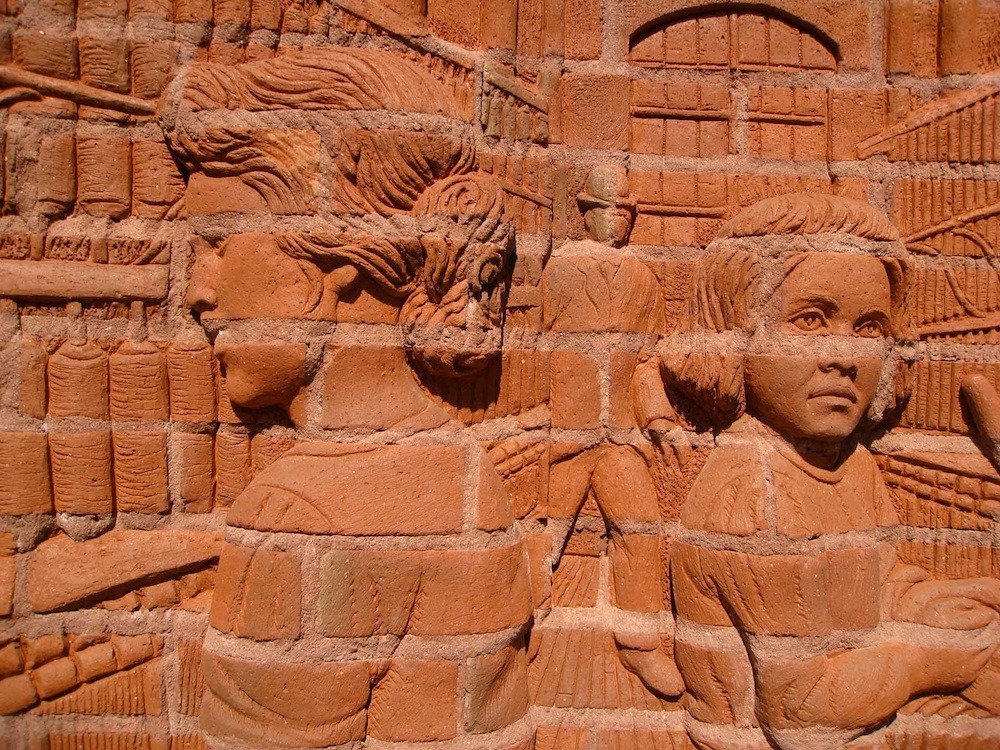
“I asked the committee to come up with one word ‘ideals’ about their future, about their hopes, so in that section people are picking up those brass notes that look like paper and putting them in a bucket,” says Spencer. “A little girl is kind of dumping them into the air and they’re kind of fluttering out. It’s ancient history, recent history, and then future.”
In keeping with the history of brick sculpture dating back nearly ten thousand years, Spencer creates his designs almost entirely by hand. He drafts drawings which he then scales up, but to visualize the pieces in 3-D he makes models that are refined as the design takes shape. For the relief, he projects drawings onto a flat wall and draws outlines of his figures. “It is a combination, depending on the style of the sculpture,” he says.
When working on a public art project, Spencer is keen to not let his ego as “the artist” get in the way. Public art committees are often made of government members, business people and others who may have their own ideas about what they want the art to be.
“I design things and sometimes they might say, ‘Well, we like this and what about this, or could you change this a little bit,'” Spencer explains. “As a public artist you have to be the kind of person that wants to do that and not say, ‘No, this is my work and I’m going to do what I want.’ I like a lot of input because you want to give them something that means something to them, and yet no matter how much research you do, you don’t live there, so you don’t know some of the details of a place. Having input is really helpful to guide the design process.”
